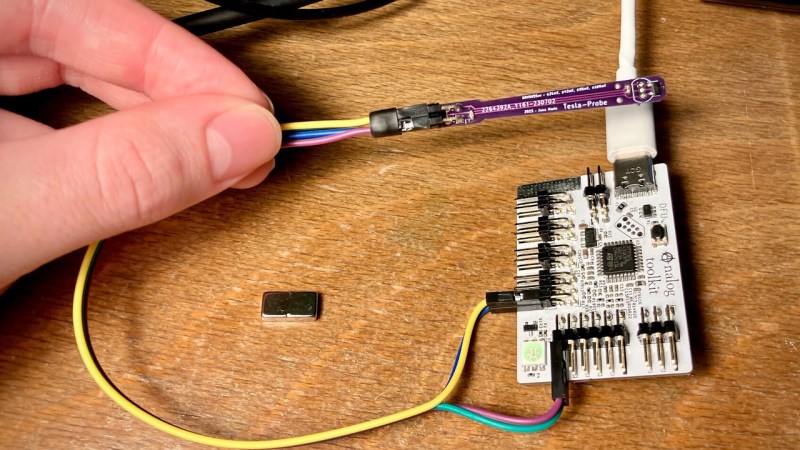Analog acquisition tools are super helpful whenever you want to run an experiment, test out a theory, or improve upon your code, and you won’t realize how much you always needed one up until you’re facing a situation where it’s the only tool for the task. Well, here’s a design you might just want to add to your next PCB order — the STM32G4 Analog Toolkit from [Jana Marie].
The recommended STM32G431 is a wonderful tool for the task in particular. For a start, this board exposes nine 16-bit ADC inputs, with six of them capable of differential mode and three of them having the PGA (Programmable Gain Amplifier) feature. There’s also two 12-bit DAC pins, two timer outputs, three GPIOs, and UART with I2C for the dessert. As a bonus, it can work as a PD trigger, giving you higher-than-5V voltages out of USB-C for any experiments of yours.
The board requires only a few components, most of them easily solderable, with the STM32 in the TQFP32 package. The BOM is optimized, the GPIOs are used up to the max, with two spare GPIOs driving an RGB LED using a witty control scheme. There’s even a place to clip an alligator clip, in case that’s what your probing hardware wants! All in all, this is a carefully crafted design certainly worth having on hand.
Make sure to get a few of these made before you find yourself desperately needing one! That said, there’s always a backup option, the venerable ATtiny85.

















Wow, you deleted my post here.
That chip isn’t capable enough to do proper analogue recording. the speed alone and the bit range makes it practically useless.
Yeah I usually don’t keep negative comments that are also using language like, and I quote, “I’m just an idiot that grew up in an analog world. Duuurr duuurrrr I can’t add da binaries, I can’t figure it out girls.”. This kind of comment is never a start to a good fruitful discussion. My guideline is, if I wouldn’t want to see it under other writers’ posts, it doesn’t belong under my posts either. Your comment might even contain a grain of truth, but you’re negating its effective constructiveness by adding this, don’t do that.
As for “proper”, that’s subjective. It has differential capture, PGAs, and uhhh check out AN5306 for a start? It’s a cool chip. And, the board allows you to easily add your own filtering/divider network. You can be disappointed at the bit range or speed, but this board has got more than enough nifty applications in the analog world, that I feel pretty comfortable highly recommending it to people!
🫰🫰🫰
Good luck with that!
This is why I stopped funding this site. These recommendations are aimed at beginners. This site isn’t meant for beginners.
now you’re just gate-keeping :\
Overspecialize, and you breed in weakness.
Not a problem, you seem to be the kind of arrogant individual convinced of his own superiority that gives geeks a bad name.
Why exactly do you get to decide who the audience is? Don’t be rude to the writers.
It’s the reason I don’t comment on sites like the eevblog, people have a opinion of you if you don’t use top tier brands, like fluke, Tek, agilent/keysight, sometimes a cheap tool is good enough, I do have branded stuff, but for most tests a simple tool for indication is good enough, or even a high risk environment.
yeah those people are damn annoying. don’t worry, as you can see, here we can actually tell people off. Hackaday is absolutely for beginners as much as it is for pro hackers!
Seems like this is also simple add-on compatible, probably on accident – maybe not :)
I’ve been looking for a way to create wiring like you’ve used here for the wiring going to the LED strip. What sort of female connectors are you using to connect to the headers?
Should be able to find them by looking up “DuPont connectors.”
That’s what I needed, thanks!
Is a BOM available?
The git for the entire project is linked in the article, check it out.
As an electronic newby, what can be done with this device?